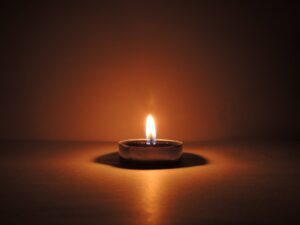The pandemic and the ritual of yortzeit
We have all been feeling the effects of the COVID-19 virus for over a year now. At this point, some people have celebrated two birthdays, anniversaries, and annual holidays under pandemic conditions. Simultaneously, as of May 8th, there have been more than three million deaths from COVID-19 worldwide. On February 20, 2020, Italy confirmed its first case of COVID-19, and the following day experienced the nation’s first death relating to the virus.
At the outset of the pandemic, Italy provided an example of a successful national lockdown and ways in which community members could feel less isolated without putting themselves in danger. The videos of Italians singing Verdi’s “Va’ pensiero” from their balconies created a boost of morale in ways unseen by most of the world in recent years.
Soon, other countries followed Italy’s example, not only for keeping people safe and healthy but also for how to hold out hope for a pandemic-free future. In the year since Italy’s first COVID-19 case and subsequent death, the country has exceeded 110,000 deaths due to the virus, but also has fully vaccinated approximately twenty percent of its population. The anniversary of COVID-19 has brought about the human necessity to remember deaths, specifically in both secular and religious contexts.
On the weekend of the first anniversary of the first Italian COVID-19 death, Italians held ceremonies – secular and religious – marking the important date. A tree was planted and a plaque was unveiled in the town of Vo Euganeo, the home of Adriano Trevisan, the first Italian to die from COVID-19. The plaque included a quote by poet Ugo Foscolo, reading, “A man never dies if there is someone who remembers him”.
While the ceremony performed in Vo and across Italy isn’t Jewish, it bears similarity to the Jewish ritual of observing a yortzeit (the Yiddish word for the series of Jewish practices used to mark the annual anniversary of a person’s death). On a person’s yortzeit, their family and others in mourning mark the day by lighting a memorial candle and reciting an ancient prayer – known as the mourner’s kaddish – in a formal prayer setting. The communal intentionality of mourning in Vo is also similar to the Jewish mourning periods of shiva and shloshim. The rituals and restrictions that characterize those periods of seven and thirty days respectively ensure that the mourners and their community can mark the passage of a loved one, while also discouraging mourners from immediately returning to the rhythms of their everyday life. The way in which the community of Vo stood together to mourn mirrors the way that Jewish communities approach the universal need for communal mourning.
In the face of second birthdays, anniversaries, and holidays during the COVID-19 pandemic, the world begins to observe the first yortzeits for deaths caused by the pandemic. As we become vaccinated and develop the potential for herd immunity from COVID-19, let us hope the number of future COVID-related deaths are limited, and the global community has few new yortzeits to observe.
* This piece is part of a series of articles written by students of Muhlenberg College, Pennsylvania, USA, enrolled in a course on the history and culture of Jewish Italy, taught by Dr. Daniel Leisawitz, Assistant Professor of Italian and Director of the Muhlenberg College Italian Studies Program.

